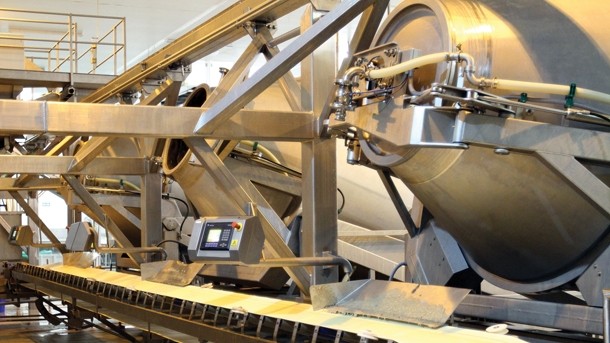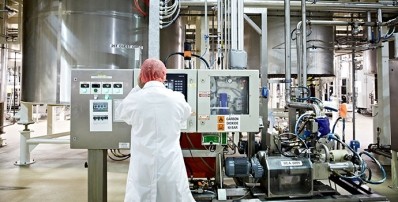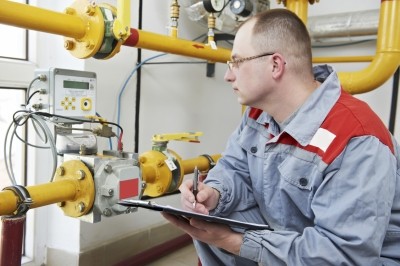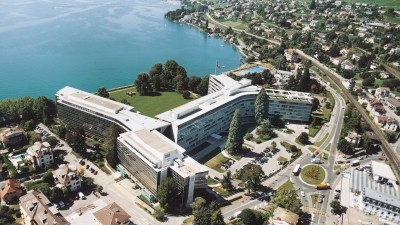New factories need future-proofing

Multiple priorities compete for attention in factory design. This makes it essential to fashion a continual process where all these considerations (not least costs and speed of delivery) are communicated, evaluated, combined and – where there is a conflict – reconciled.
As in so many areas of business, that element of communication is of vital importance. At construction management company Meller, director Colin Cox describes what happens when this ingredient is missing.
“We’ve just done a feasibility study for a customer who was three-quarters of the way through another build before he realised that what was being built was not what he wanted,” he says. “It’s about people not asking the right questions. In this case, the flow of the factory wasn’t right, but those involved were blinkered by the delivery date.”
Ensuring this sort of thing does not happen is key to Meller’s own approach. “We get involved from the start, and whether it's on questions of hygiene or people flow, we proactively go out and ask the right people the right questions,” says Cox.
As a consultancy, having as many disciplines as possible under one roof can help in this process. “We always used to sub-contract the design,” says Cox. “But around four years ago, we bit the bullet and opened our own design studio.”
A sister company, Protolan, specifies and sources line equipment.
In many cases, says Meller, food industry engineering and other in-house teams have dwindled in the tighter market conditions, making businesses more likely to rely on external partners for project management and process design.
At Lorien Engineering Solutions, operations director Bill Treddenick has watched those adverse conditions evolve into what he terms a freeing-up of the marketplace in terms of capital expenditure. “There is a greater awareness of lifetime costs,” he adds. “That’s one of the biggest drivers when people are thinking about where they may be investing in the future.”
The elements of capital cost, lifetime cost, future-proofing and speed-of-delivery will carry varying amounts of weight for different manufacturers. Costs can be “very daunting” for a customer, says project management company FEG, whether businesses opt to extend an existing facility or create a new-build factory on a remote site.
Opting for a fresh location may have the advantage that it does not interfere with the existing operation, but it is not likely to be a quicker solution. “Nor is it just about the cost of building the second factory,” warns project manager Dave Banham. “The construction cost is often insignificant compared with the overall cost of keeping two factories running.”
Future proofing (Return to top)
The question of future-proofing is much discussed. As Banham explains, equipment is becoming less product-specific, giving end-users greater flexibility, particularly in areas such as robotics. The challenges when predicting and allocating future space requirements are rather different. “We always ask customers whether they can get hold of outlying land with planning permission,” he says.
At Lorien, Treddenick says: “We advise customers to concentrate on the core of their site, which in food and drink will usually be the processing, and work outwards from that core. Get that right from an ergonomic – and probably from a GMP [good manufacturing practice]– point of view. Elements such as the final packaging formats are the ones which are more likely to change.”
Where a business is visibly on an upward curve, greater allowance can be made for future expansion. “If you just put a concrete floor down, the real advantage is speed, in terms of how quickly you could get a new line up and running,” says Treddenick.
Where expansion is happening on an existing site, there is an additional benefit, says Lorien’s building design department manager Paul Hanson: “You want to do the messy work involving topsoil and concrete only once, if it is next to a production area. You don’t want to be doing it again in three years’ time.”
Meller’s Cox describes how this process of preparation can be taken further: “For a particular customer, we might build the shell and fit it out so that it is three-quarters complete, with refrigeration, water and drainage, for example.”
But then, putting the whole idea of ‘future-proofing’ into perspective, Cox adds: “Some 30% of the projects we’ve started have ended up being a different build or manufacturing a different product.”
When it comes to questions of energy efficiency and sustainability, there is an increasingly wide range of options available. “We will usually be asked by the client to present the different options, the investment required and the payback period,” says John Moxon, business development director at Clegg Food Projects.
He adds: “We’re doing more of these feasibility studies, exploring ‘what if?’ scenarios, or evaluating different energy and sustainability options. If I invest in creating more of the space that I might need in the future, how much more would it cost in five years’ time?”
But if food industry customers are more aware of a wider array of options, they also appear willing to think longer-term.
“Payback periods are getting longer,” says Hanson. “A few years ago, just 18 months or two years was judged acceptable. Now, it might be five or six years, or more.”
Sustainable solutions (Return to top)
Integrating sustainable solutions into the factory design may add 5–10% to the capital cost, says Meller. “Food customers tend to want the quickest payback times but, for environmental solutions, this may take five or even 10 years,” says Cox. “On a five-year payback we might try to incorporate ground source heat pumps or solar cladding, for example. Something like kinetic energy generation might take 10 years.”
Planning is not the hurdle it used to be, according to FEG. “Project management and the planning authorities used to be two parties either side of a chasm,” says Banham. “Now it’s different. They will generally want to create jobs in their area.”
Clegg’s Moxon explains: “There’s been a drive from central government down to ease the planning process. Even so, the earlier people engage with the planning authorities, the better. Nowadays, you may sometimes have to pay for pre-planning meetings, but it could save time later.”
And there are savings to be made, as Meller points out. “Customers forget that, once you’ve submitted all the relevant information, for a major application, the assessment process may take 13 or even 16 weeks,” says Cox.
The challenge of reconciling these different perspectives goes even further, according to ‘lean’ consultancy SA Partners, whose chairman professor Peter Hines will be speaking at a conference on ‘Food factories of the future’, organised by Campden BRI on October 9. Hines points out that the design of a factory is largely shaped by the supply chain and processes which go into making the product. “In some cases, you may be able to design the supply chain better,” he says.
He cites the example of a ready meals manufacturer which operated a “huge freezer” in the middle of its factory. “Because of perceived variability of demand, the customer froze its products,” he reports. “There was a cost in terms of convenience, since it meant the consumer could not freeze them again, and there was the cost of running the freezer.” Reorganising production and redesigning the factory to take out this freezing stage also reduced wastage by 5%, says SA Partners, and gave retailers an extra two days of shelf-life.
Once again, says Hines, it is about improving information flow to ensure that the right decisions are taken on the right basis.
Designing for factory shopfloor maintenance (Return to top)
Accommodating maintenance considerations within a factory design will usually mean involving workers who are familiar with daily operations and routines.
At construction and project management company Lorien Engineering Solutions, building design department manager Paul Hanson says: “We do a lot of 3D visualisation. This brings real benefits when you sit down with factory operatives who may not be familiar with engineering floor plans. A 3D virtual reality walk-through will often throw up maintenance issues, such as pumps or valves which will need to be replaced.”
At design and construction management company FEG, project manager Dave Banham explains the need to plan engineering and maintenance access into those areas with the tightest hygiene controls. “And you need to design with decent spaces, so that a machine or component can actually be removed if it needs to be,” he says.
Colin Cox, director of construction management company Meller, explains how hygiene maintenance is interlinked with other design factors: “If you need water to clean a machine, how are you going to heat it? You need a boiler, you need a drain, you need a room to house the boiler, and you need to provide service access. And if you get the hygiene elements wrong, they can cause a maintenance nightmare. The wrong kind of flooring will break up if corrosive cleaning chemicals are used.”
Details can make a difference. “We see more LED lighting being used,” says Cox. “This may cost 30% more to install, but you don't incur the cost of continually changing lightbulbs.”


















